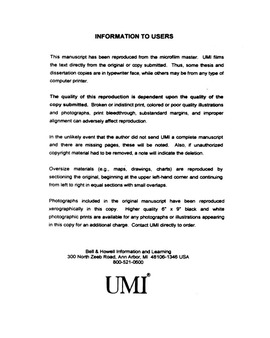| dc.contributor.advisor | Abell, Troy, | en_US |
| dc.contributor.author | Held, Kathryn B. | en_US |
| dc.date.accessioned | 2013-08-16T12:31:08Z | |
| dc.date.available | 2013-08-16T12:31:08Z | |
| dc.date.issued | 2000 | en_US |
| dc.identifier.uri | https://hdl.handle.net/11244/6025 | |
| dc.description.abstract | This project uses prenatal, postnatal, and follow-up data from a prospective cohort study of 131 mother and child dyads to examine (1) risk factors for asthma in children at 4--7 years, (2) how having asthma changes the life of a child, and (3) social factors affecting the ability of mothers to manage asthma in their child. Both quantitative and ethnographic data are incorporated. | en_US |
| dc.description.abstract | Asthmatic children had poorer lung function, more illness episodes, and more contact with health professionals. Boys diagnosed with asthma were viewed by their mothers as less masculine. Children with an asthma diagnosis also had higher vocabulary scores as assessed by the PPVT-R. The social conditions in many low-income households made management of allergen exposure nearly impossible. Ethnographic evidence suggests fear of crime drives many parents to keep their children indoors, reducing their opportunities for exercise and increasing sustained exposure to indoor allergens. | en_US |
| dc.description.abstract | Most of the risk factors identified in this study---maternal obesity, maternal age and parity, maternal history of prior elective abortion, and social stressors---could logically be linked to promotion of Th2-type immune function. Possible mechanisms are discussed. | en_US |
| dc.description.abstract | Hypotheses tested demonstrate higher asthma rates among children born asymmetrically growth retarded with smaller chest circumference or shorter trunk length for gestational age. Body mass of mothers was also higher for children diagnosed with asthma. Asthmatic children were born to younger mothers with lower parity. A prior history of elective abortions in mothers increased risk of asthma in index children. Number of people living in the home, however, did not influence asthma rates. Housing and living conditions had only a modest association with rates of diagnosed asthma. Maternal smoking did not increase risk. In fact, asthma rates were slightly lower among children whose mothers smoked during their pregnancies or at follow-up. Sociodemographic characteristics associated with higher asthma rates differed by ethnicity. Among European-Americans, children with asthma were born into families with lower household incomes and were more often born to single mothers. Among African-American children, on the other hand, those with asthma lived in households with higher incomes and their mothers were more likely to be married. | en_US |
| dc.format.extent | xii, 312 leaves ; | en_US |
| dc.subject | Anthropology, Cultural. | en_US |
| dc.subject | Health Sciences, Immunology. | en_US |
| dc.subject | Anthropology, Physical. | en_US |
| dc.subject | Asthma Risk factors. | en_US |
| dc.subject | Asthma in children. | en_US |
| dc.title | A prospective cohort study of maternal factors in childhood asthma: Parity, obesity, fetal growth, and social stressors. | en_US |
| dc.type | Thesis | en_US |
| dc.thesis.degree | Ph.D. | en_US |
| dc.thesis.degreeDiscipline | Department of Anthropology | en_US |
| dc.note | Adviser: Troy Abell. | en_US |
| dc.note | Source: Dissertation Abstracts International, Volume: 61-08, Section: A, page: 3236. | en_US |
| ou.identifier | (UMI)AAI9985574 | en_US |
| ou.group | College of Arts and Sciences::Department of Anthropology | |
